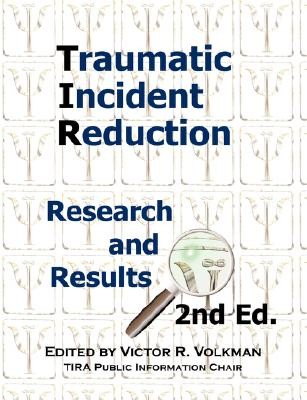
- We will send in 10–14 business days.
- Publisher: Loving Healing Press
- Year: 2008
- Pages: 184
- ISBN-10: 1932690506
- ISBN-13: 9781932690507
- Format: 18.9 x 24.6 x 1 cm, minkšti viršeliai
- Language: English
- SAVE -10% with code: EXTRA
Traumatic Incident Reduction (e-book) (used book) | bookbook.eu
Reviews
Description
What Traumatic Incident Reduction (TIR) Does:"When accessed with the specific cognitive imagery procedure of TIR, a primary traumatic incident can be stripped of its emotional charge permitting its embedded cognitive components to be revealed and restructured. With its emotional impact depleted and its irrational ideation revised, the memory of a traumatic incident becomes innocuous and thereafter remains permanently incapable of restimulation and intrusion into present time." -Robert H. Moore, Ph.D. What's Inside the Book:
Traumatic Incident Reduction: Research & Results provides synopses of several TIR research projects from the early 1990s to today. Each article, in the researcher's own words, provides new insights into the effectiveness of Traumatic Incident Reduction. The three doctoral dissertation level studies that form the core of this book investigate the outcome results of TIR with crime victims, incarcerated females, and anxiety and panic disorders respectively (Bisbey, Valentine, and Coughlin.) Both informal and formal reports of the "Active Ingredient" study by Charles R. Figley and Joyce Carbonell of Florida State University investigate how TIR and other brief treatments for traumatic stress provide relief. A further case study by Teresa Descilo, MSW informs of outcomes from an ongoing project to provide help to at-risk middle-school students in an inner-city setting. An introduction by Robert H. Moore, Ph.D. provides background into how TIR provides relief for symptoms of Post-Traumatic Stress Disorder (PTSD) and firmly establishes the roots of TIR in the traditions of desensitization, imaginal flooding, and Rogerian techniques. Researcher's Praise for TIR
"TIR does not require years of collegiate study to pre-qualify the provision of assistance to others. The efficacy of TIR is not contingent on the unique talents of a particular facilitator. The procedure is standardized and does not require continuous adjustments." -Wendy Coughlin, Ph.D. From the EXPLORATIONS IN METAPSYCHOLOGY SERIES
Series Editor: ROBERT RICH, PH.D.
Learn more about this subject at www.TIR.org
EXTRA 10 % discount with code: EXTRA
The promotion ends in 21d.06:11:19
The discount code is valid when purchasing from 10 €. Discounts do not stack.
- Publisher: Loving Healing Press
- Year: 2008
- Pages: 184
- ISBN-10: 1932690506
- ISBN-13: 9781932690507
- Format: 18.9 x 24.6 x 1 cm, minkšti viršeliai
- Language: English English
"When accessed with the specific cognitive imagery procedure of TIR, a primary traumatic incident can be stripped of its emotional charge permitting its embedded cognitive components to be revealed and restructured. With its emotional impact depleted and its irrational ideation revised, the memory of a traumatic incident becomes innocuous and thereafter remains permanently incapable of restimulation and intrusion into present time." -Robert H. Moore, Ph.D. What's Inside the Book:
Traumatic Incident Reduction: Research & Results provides synopses of several TIR research projects from the early 1990s to today. Each article, in the researcher's own words, provides new insights into the effectiveness of Traumatic Incident Reduction. The three doctoral dissertation level studies that form the core of this book investigate the outcome results of TIR with crime victims, incarcerated females, and anxiety and panic disorders respectively (Bisbey, Valentine, and Coughlin.) Both informal and formal reports of the "Active Ingredient" study by Charles R. Figley and Joyce Carbonell of Florida State University investigate how TIR and other brief treatments for traumatic stress provide relief. A further case study by Teresa Descilo, MSW informs of outcomes from an ongoing project to provide help to at-risk middle-school students in an inner-city setting. An introduction by Robert H. Moore, Ph.D. provides background into how TIR provides relief for symptoms of Post-Traumatic Stress Disorder (PTSD) and firmly establishes the roots of TIR in the traditions of desensitization, imaginal flooding, and Rogerian techniques. Researcher's Praise for TIR
"TIR does not require years of collegiate study to pre-qualify the provision of assistance to others. The efficacy of TIR is not contingent on the unique talents of a particular facilitator. The procedure is standardized and does not require continuous adjustments." -Wendy Coughlin, Ph.D. From the EXPLORATIONS IN METAPSYCHOLOGY SERIES
Series Editor: ROBERT RICH, PH.D.
Learn more about this subject at www.TIR.org


Reviews